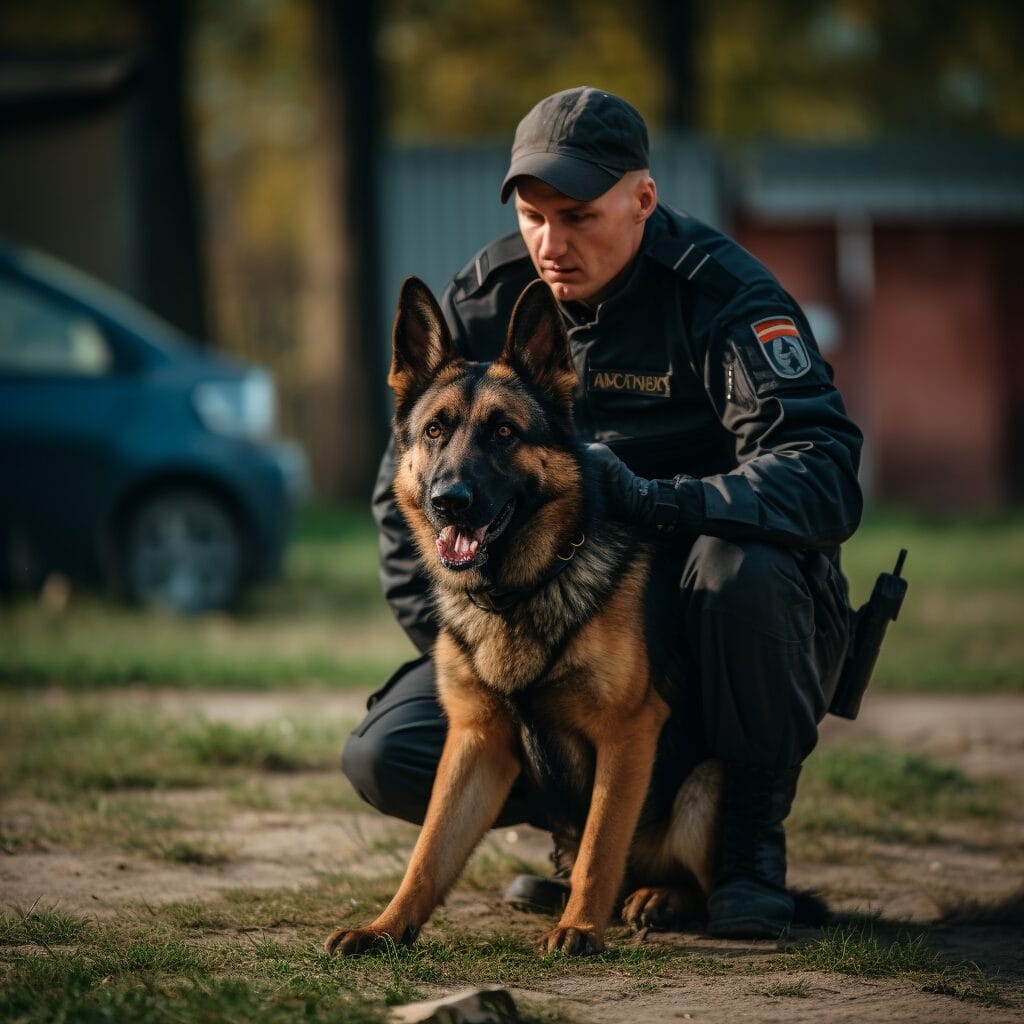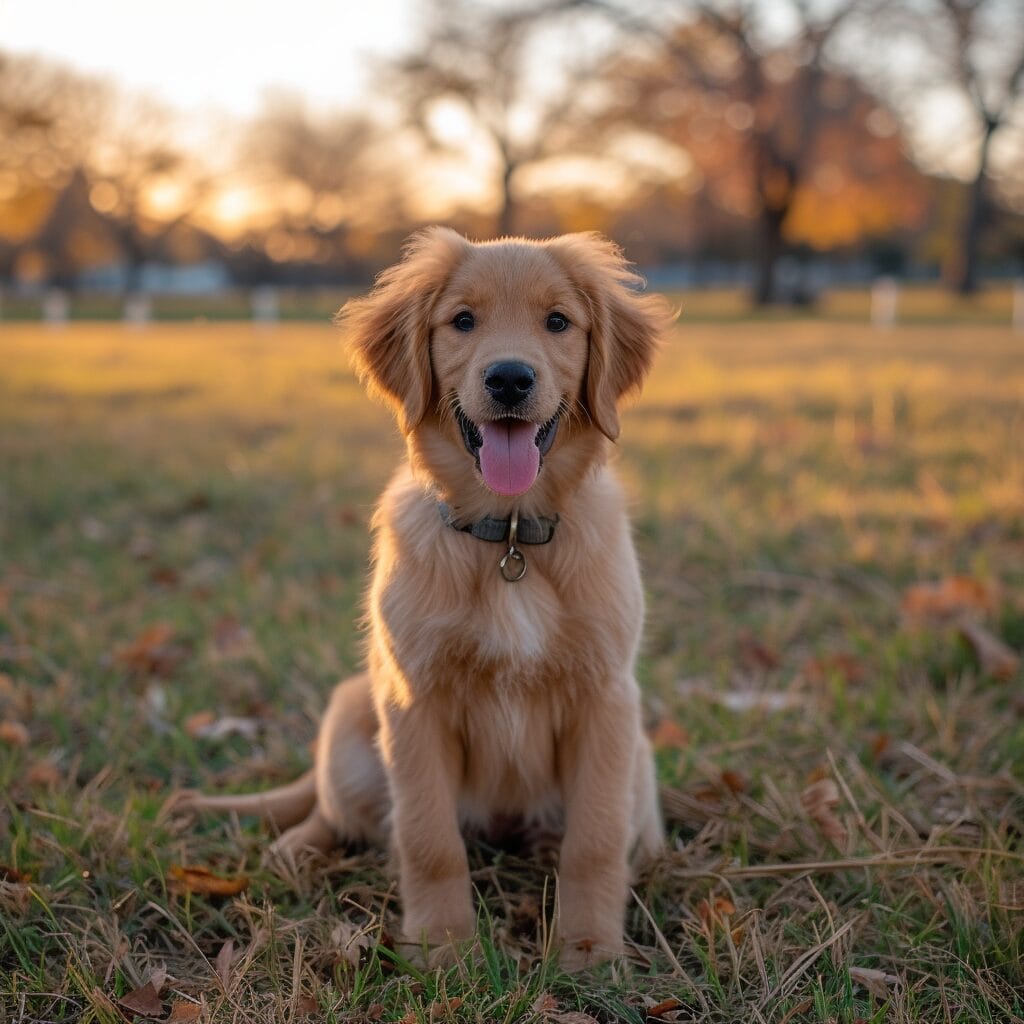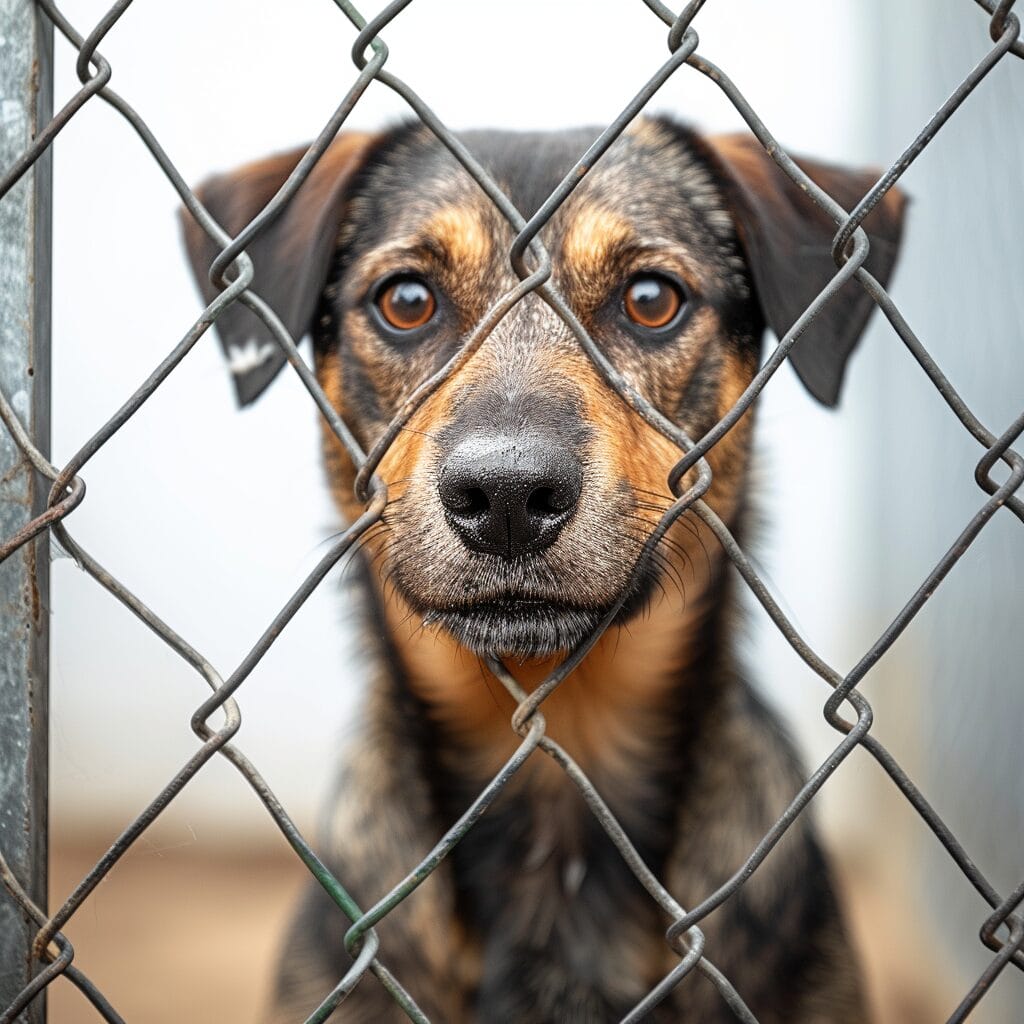Did you know that police dogs, breeds, can learn over 30 commands in multiple languages, officer? These highly skilled K-9 officers play a crucial role in law enforcement, but have you ever wondered how they are trained to perform their duties effectively? From obedience training to specialized scent detection, the process of preparing these purpose dogs is both fascinating and rigorous.
Police dog training involves intensive exercises that cultivate agility, discipline, and an acute sense of smell. The meticulous routines encompass tracking, searching for narcotics or explosives, and even providing protection to their handlers when necessary. Understanding the intricate methods behind this training offers insight into the capabilities of these exceptional animals and the indispensable support they provide to law enforcement agencies worldwide.
How are Police Dogs Trained
Understanding the Role of Police Dogs
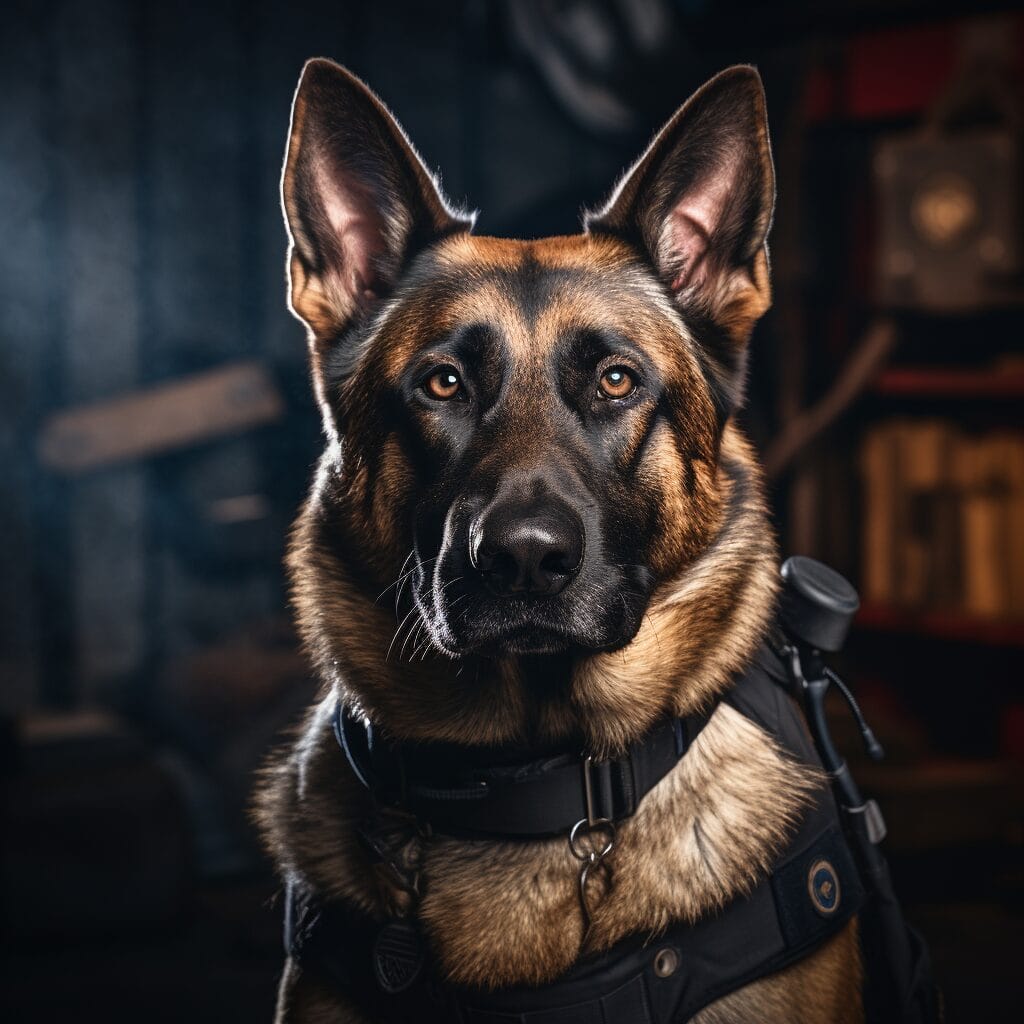
Varied Roles
Police dogs are trained to fulfill various roles in law enforcement, including tracking, detection, and apprehension. They use their keen senses and agility to assist officers in carrying out police work effectively. These canines play a crucial role in ensuring public safety and aiding in criminal investigations.
These highly skilled animals contribute significantly to the success of law enforcement operations. For instance, they are trained to track down suspects or missing persons by following scent trails over different terrains.
Specialized Training
Training for police dogs is rigorous and specialized, tailored to equip them with the necessary skills for their designated tasks. The training process involves obedience training, scent detection training, agility exercises, and controlled aggression training.
During obedience training, these dogs learn commands such as sit, stay, come here, and heel. This ensures that they respond promptly to their handlers’ instructions during operations.
In scent detection training, the dogs are taught how to identify specific scents related to drugs or explosives. They become proficient at locating hidden substances within various environments like buildings or vehicles.
Agility exercises focus on enhancing the physical abilities of these animals so they can navigate different terrains swiftly without getting fatigued easily.
Controlled aggression training teaches the dogs when it’s appropriate to apprehend a suspect under the command of their handler while also being able to restrain themselves from attacking unnecessarily.
Selection Process for Potential Police Dogs

Evaluating Traits
Potential police dogs are carefully selected based on specific traits such as courage, intelligence, and sociability. Courage is crucial because police dogs often work in high-pressure situations, requiring them to be brave and unwavering.
Intelligence is also essential as it enables the dog to quickly learn commands and understand complex tasks. Sociability plays a significant role in the selection process since police dogs need to interact with their handlers, other officers, and even members of the public while maintaining composure.
The assessment process involves various tests designed to gauge these traits. For example, a potential police dog might undergo an evaluation where they encounter loud noises or unfamiliar objects to assess their courage and reaction under stress. They may be observed during interactions with strangers or other animals to determine their sociability.
Key Factors Considered
During the selection process for potential police dogs, several key factors are taken into account: breed, temperament, and health. Different breeds exhibit varying characteristics that make them suitable for different types of policing work; for instance, German Shepherds are commonly used for patrolling due to their intelligence and agility.
Temperament is another critical consideration as it influences how well a dog can handle stressful situations without becoming aggressive or anxious.
Furthermore, health assessments are conducted to ensure that potential police dogs are physically fit for training and operational duties. This includes evaluating their overall health status through veterinary examinations that check for any underlying medical conditions that could affect their performance as working animals.
Basic Obedience Training for Police Canines
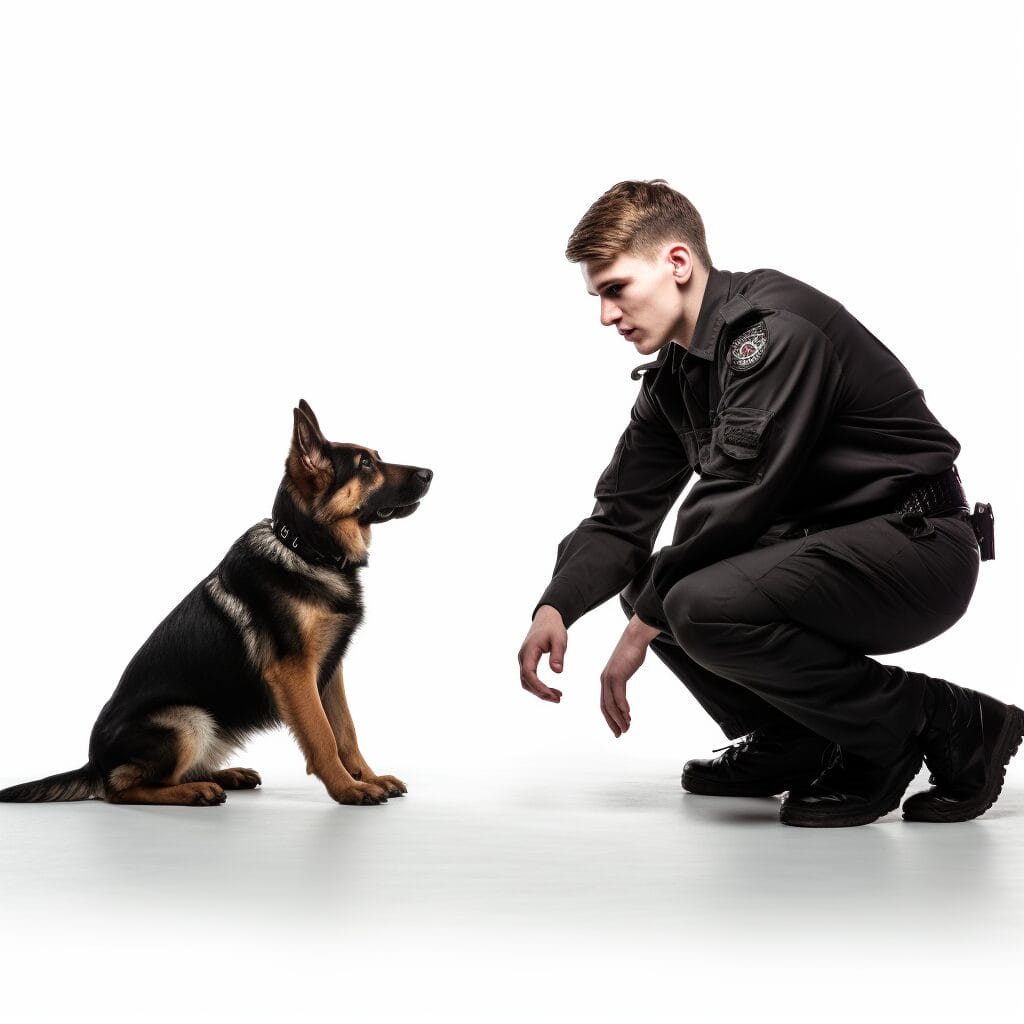
Foundational Commands
Basic obedience training is crucial in police dog preparation. This initial phase focuses on fundamental commands such as sit, stay, heel, and come. These commands are essential for establishing discipline and control in police dogs.
This foundational training provides a solid groundwork for the development of more advanced skills in specialized areas. It sets the tone for the duty that police dogs will perform alongside their handlers.
The basic commands form the backbone of a police dog’s ability to follow instructions during operations and missions. For instance, when a police officer instructs a canine unit to “sit” or “stay,” it needs to respond promptly and accurately.
Discipline and Control
Obedience training instills discipline in police dogs, ensuring they understand how to behave appropriately while on duty. By learning to obey basic commands consistently, these canines develop self-control and reliability.
In high-pressure situations where quick decisions are vital, this level of discipline enables them to focus on their tasks without getting distracted by external stimuli or impulses.
This control is especially important when working with law enforcement officers during apprehensions or searches. The ability of a well-trained police dog to maintain composure under stressful circumstances is directly linked to its foundational obedience training.
Specialized Skill Development
Beyond laying down the groundwork for good behavior, basic obedience training serves as an entry point into more specialized skill development for different tasks within law enforcement duties.
For example, after mastering basic commands like “heel,” which requires walking closely beside their handler without pulling or straying off course, police dogs move on to learn tracking techniques used in search-and-rescue operations or criminal investigations.
Similarly, understanding the command “come” not only ensures immediate response from the canine but also forms the basis for recall exercises essential during pursuits or emergency situations where swift return is necessary.
Specialized Skill Development in Tracking and Detection
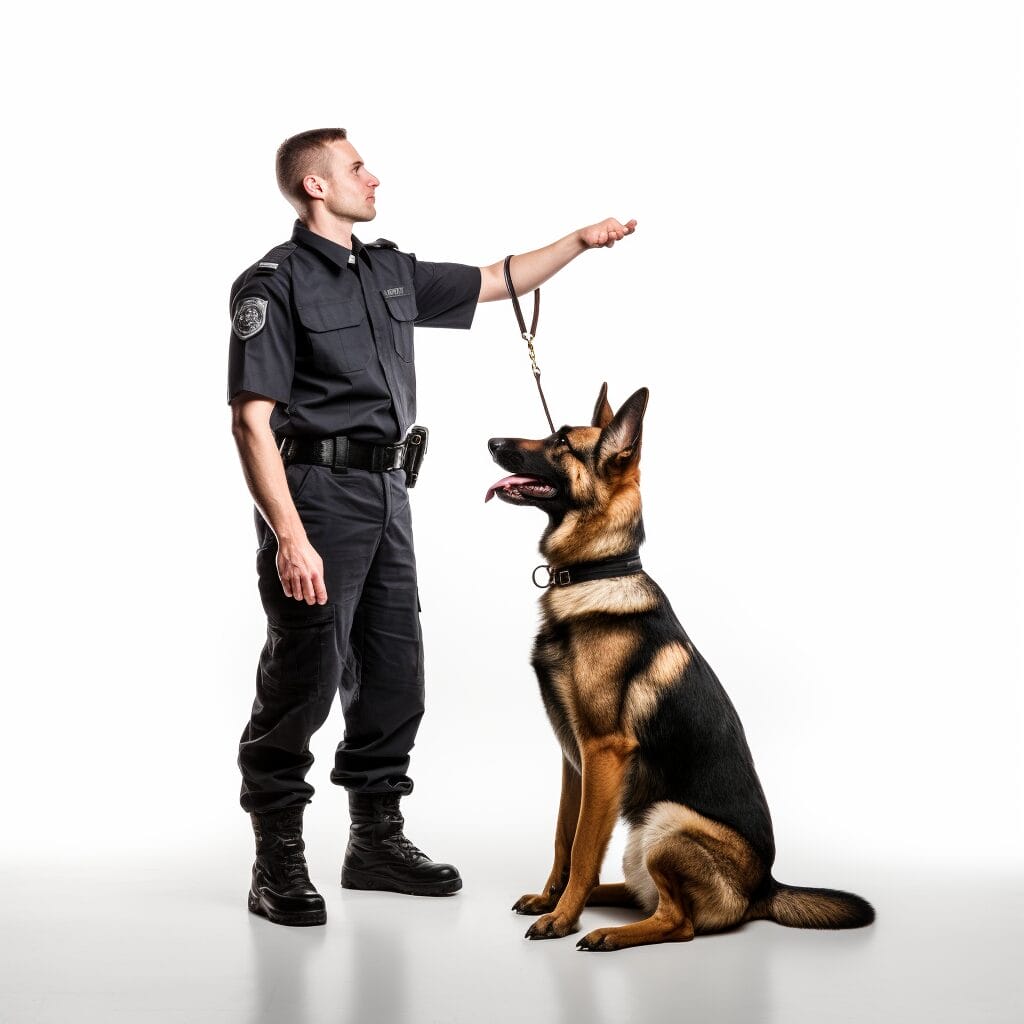
Tracking Training
Police dogs undergo specialized training to develop their tracking abilities. They are taught to follow scents over various terrains, including urban areas, forests, and bodies of water. This training is crucial for helping law enforcement locate missing persons or suspects who have fled a crime scene. For instance, a police dog can pick up a scent from an item of clothing left behind by a suspect and then track that individual over long distances.
The process involves introducing the dog to different scents and teaching them to recognize and distinguish between these scents. Once the dog has mastered this skill, they progress to following specific scent trails laid out by trainers. Through consistent practice and reinforcement, police dogs become adept at tracking individuals across diverse landscapes.
Detection Training
In addition to tracking, police dogs receive detection training where they learn how to identify narcotics, explosives, or other contraband items. This type of specialized skill development is essential for assisting law enforcement in uncovering evidence during searches or detecting illegal substances during patrols.
During detection training sessions, dogs are exposed to various scents associated with narcotics or explosives. They learn to detect these odors even when concealed within vehicles or buildings. The ability of police dogs to swiftly identify such substances plays a critical role in preventing criminal activities and ensuring public safety.
Application in Law Enforcement
The specialized skills developed through tracking and detection training enable police dogs to play pivotal roles in supporting law enforcement operations. For example:
- When someone goes missing in rugged terrain or densely populated areas, trained police dogs can quickly pick up the person’s scent trail.
- During drug busts or raids on suspected locations containing explosive materials, K9 units equipped with detection skills assist officers by locating illicit substances without compromising safety.
- In crime scene investigations, these highly skilled animals help uncover hidden evidence that could be vital for solving cases.
Overall, police K9 units equipped with advanced tracking and detection capabilities provide invaluable support that significantly enhances the effectiveness of law enforcement agencies.
Advanced Training for Apprehension and Patrol

Techniques for Safely Subduing Suspects
Police dogs undergo advanced training to develop the skills needed to safely subdue suspects when required. This involves teaching the dogs how to apprehend individuals without causing harm, using techniques like controlled biting and holding. For instance, a police dog may be trained to apprehend a suspect by biting onto their arm or leg until officers can secure the individual.
This phase of training emphasizes the ability of police dogs to assess situations and respond with appropriate force. It’s crucial for these animals to understand when and how much force is necessary, ensuring that they can effectively assist law enforcement officers in potentially dangerous scenarios. By mastering these techniques, police dogs become invaluable assets in maintaining public safety.
Protection and Response in High-Pressure Situations
Patrol training is an essential aspect of advanced police dog training. During this phase, the dogs learn how to protect officers and respond to threats in high-pressure situations. They are taught various commands that enable them to control their aggression while still effectively carrying out their duties as part of a law enforcement team.
In real-life scenarios, such as tracking down fleeing criminals or responding to violent incidents, these highly trained animals exhibit remarkable control over their actions despite being exposed to intense stimuli. For example, if a suspect attempts physical harm against an officer during an arrest, a well-trained police dog will act swiftly but under precise command from its handler.
Controlled Aggression and Precise Execution
The final stage of advanced training focuses on instilling controlled aggression and ensuring precise execution of commands by police dogs. This includes honing skills related not only to apprehending suspects but also detecting explosives or other hazardous materials accurately.
Conditioning Police Dogs for Different Environments

Environmental Adaptation
Police dogs are trained to operate effectively in a variety of settings, including urban, rural, and indoor environments. This exposure helps them acclimate to different stimuli they may encounter during their operations. For instance, in urban areas, police dogs need to be comfortable with loud noises and crowds. Conversely, in rural settings, they must navigate uneven terrain and open spaces.
This conditioning is crucial as it prepares the canines for real-world scenarios they might face while on duty. By exposing them to diverse environments during training sessions, these animals learn how to remain focused amidst distractions and unfamiliar surroundings. As a result, when deployed for operational duties such as search missions or crowd control in various locations like parks or shopping malls, the police dogs exhibit adaptability and confidence.
Operational Flexibility
The adaptability of police dogs is essential due to the varied operational environments they may encounter during their service. Whether it’s assisting law enforcement agencies within different cities or across countries where practices and cultures vary widely, these highly-trained animals need to remain effective regardless of the setting. The ability of police dogs to seamlessly transition from one environment to another ensures that law enforcement agencies can rely on their assistance without concern for environmental limitations.
Moreover, this adaptability enables police dogs to carry out specialized tasks such as detecting illegal substances at airports or conducting search-and-rescue missions in disaster-stricken regions around the world. Their training equips them with the skills necessary not only for domestic operations but also for international deployments where they might have never been previously exposed.
The Importance of Handler-Dog Bonding

Fostering Trust and Teamwork
Building a strong bond between handlers and their canine partners is crucial in the training process. When police dogs trust and feel connected to their handlers, they are more likely to work effectively as a team. This trust forms the foundation for successful policing operations. For instance, when a dog trusts its handler, it will be more willing to follow commands even in challenging or dangerous situations.
Effective communication plays a vital role in the relationship between handlers and police dogs. By establishing clear signals and cues, the handler can convey instructions to the dog accurately during operations. As a result, this mutual understanding enhances the overall effectiveness of the handler-dog duo. This is particularly important when working in high-stress environments where quick and precise responses are essential.
Fundamental Role in Policing Operations
The bond between a handler and their dog is fundamental to successful policing operations. When on duty, these duos must rely on each other for safety and support. A well-established bond ensures that both parties understand each other’s behaviors, reactions, strengths, weaknesses, fears, and capabilities. This deep understanding allows them to anticipate each other’s actions during critical missions.
In real-life scenarios such as search-and-rescue missions or criminal apprehension tasks, this close connection becomes indispensable for achieving desired outcomes swiftly without compromising safety or efficiency.
Ongoing Training and Certification Requirements
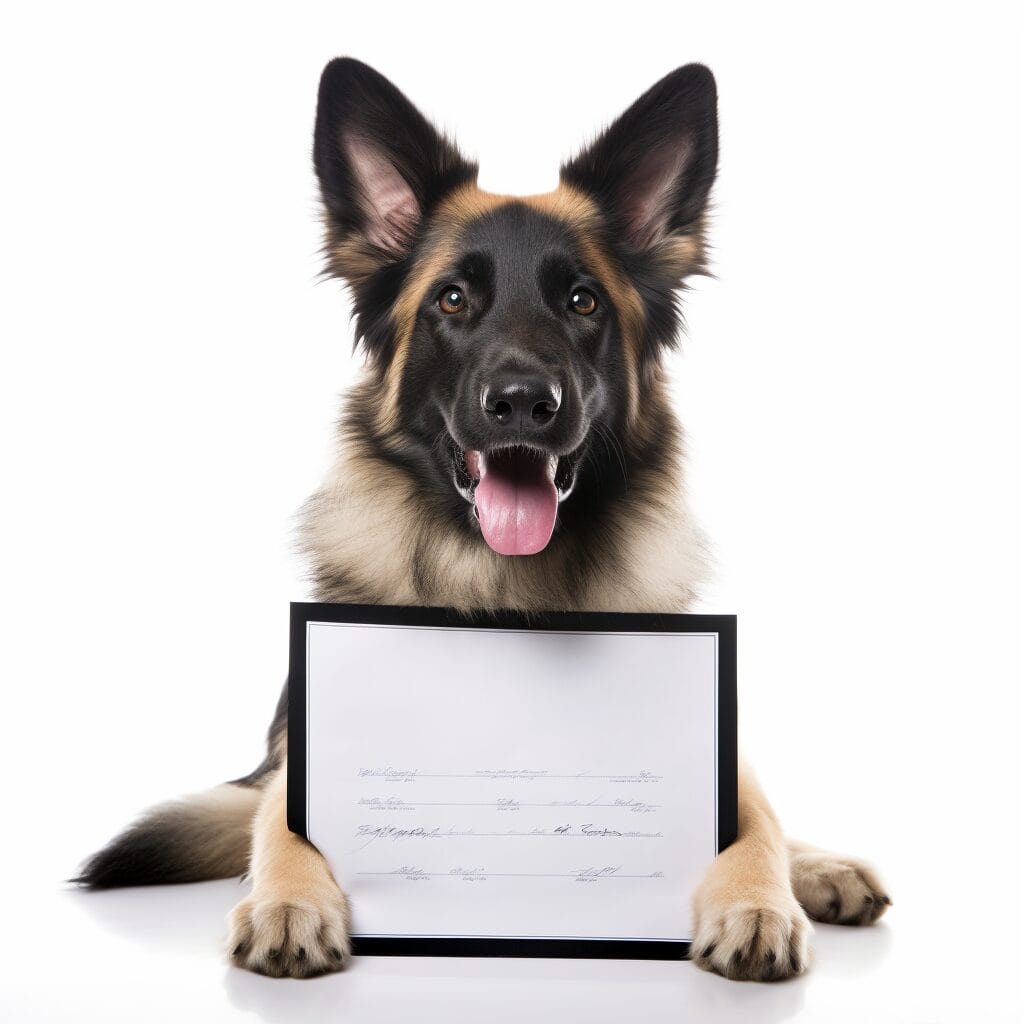
Continuous Training
Police dogs undergo continuous training to ensure they maintain their peak performance levels. This ongoing education is essential for keeping the canines sharp and ready for any situation. The training program includes regular exercises that simulate real-life scenarios, such as searching for drugs or apprehending suspects. Through these activities, the dogs not only refine their skills but also stay mentally and physically fit.
Continuous training also plays a crucial role in reinforcing the bond between the handler and the dog. By working together consistently, both parties develop a deep understanding of each other’s cues and behavior, leading to seamless coordination during operations.
Regular Certification Assessments
Regular certification assessments are conducted to validate the proficiency of both the canine and its handler. These assessments ensure that police dogs meet specific standards required for their duties. During these evaluations, handlers demonstrate their ability to effectively communicate with their canine partners while executing various tasks.
The certifications also serve as a means of accountability, assuring law enforcement agencies and communities that police dogs are well-trained and capable of performing their assigned roles safely and effectively.
Ongoing Education
Ongoing education is vital for keeping police dog teams updated on new techniques while reinforcing existing skills. In recent years, advancements in behavioral science have led to improved methods for training police dogs. Therefore, staying informed about these developments through resources such as seminars, workshops, or online courses is essential for enhancing performance.
Moreover, ongoing education enables handlers to adapt to changing laws related to K-9 units’ operations in different states within the United States (US). By remaining knowledgeable about legal regulations concerning police dog deployments across various jurisdictions within the US., handlers can ensure they operate within legal boundaries at all times.
Challenges and Best Practices in Police Dog Training
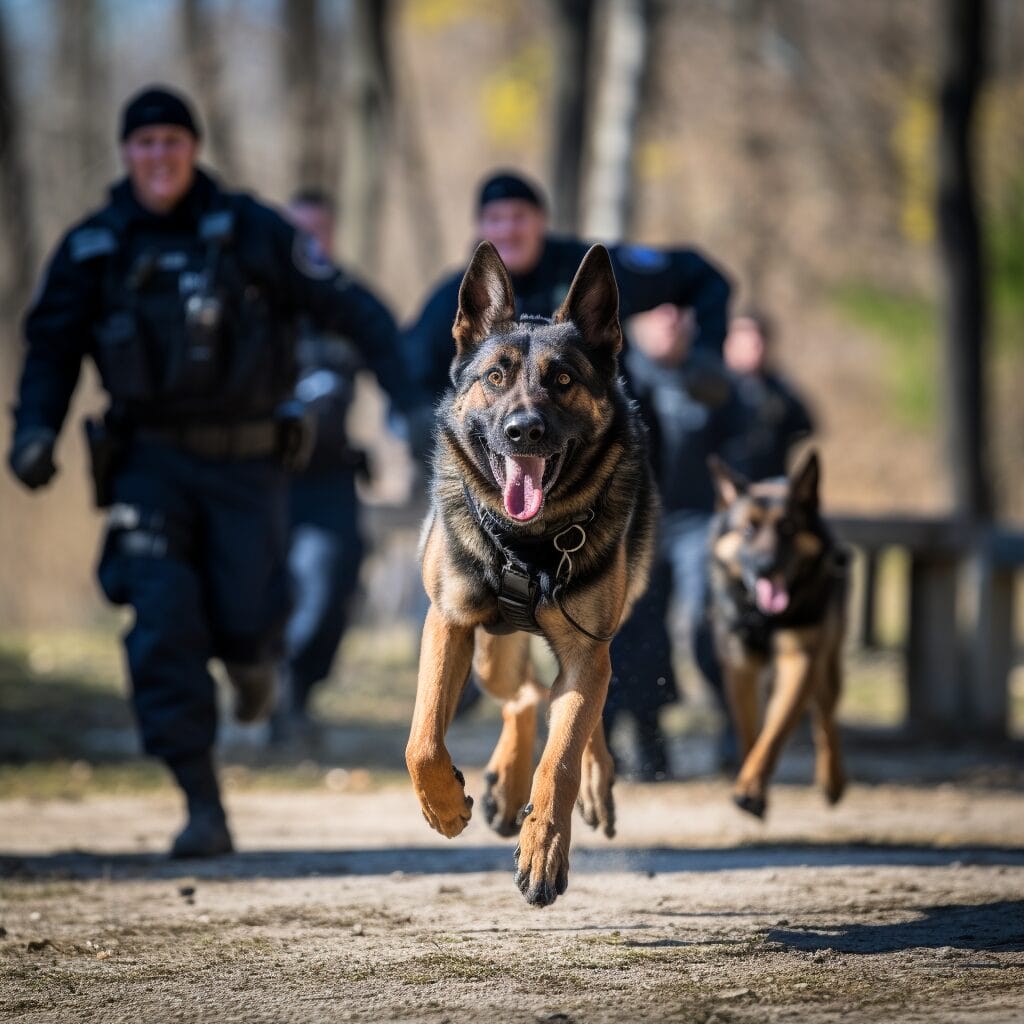
Managing Stressors
Training police dogs involves managing stressors that may impact their performance in high-stress situations. Police dogs must be trained to remain calm and focused amid loud noises, crowded areas, and other potential stress-inducing factors. For example, they need to navigate through large crowds without getting distracted or agitated.
Police dogs are exposed to various scents during operations. They must learn to differentiate between different smells while staying focused on their tasks. This requires extensive training to ensure the dog can effectively perform its duties despite being surrounded by distracting odors.
Positive Reinforcement Methods
Best practices in police dog training involve incorporating positive reinforcement methods into training protocols. Instead of using punishment-based techniques, trainers utilize rewards such as treats or toys when the dog displays desired behaviors. For instance, when a police dog successfully locates a hidden item during a search operation, it is rewarded with praise and treats.
Positive reinforcement not only motivates the dog but also strengthens the bond between the handler and the canine partner. This approach encourages desirable behaviors while minimizing stress or fear that punitive methods might induce.
Physical Limitations and Proper Care
Addressing physical limitations and ensuring proper care are essential aspects of maintaining a police dog’s well-being throughout its training and operational life. Trainers need to be mindful of each dog’s physical capabilities when designing training exercises so as not to overexert them.
Furthermore, regular veterinary check-ups are crucial for monitoring the overall health of police dogs. Handlers also play a vital role in ensuring that their canine partners receive adequate rest, exercise, nutrition, grooming, and medical attention as needed.
Summary
Congratulations! You’ve now gained a comprehensive understanding of how police dogs are trained, from their selection process to specialized skill development and ongoing training requirements. The dedication and hard work that go into shaping these loyal companions into invaluable assets for law enforcement are truly remarkable. As you’ve delved into the intricacies of police dog training, you’ve likely developed a newfound appreciation for the crucial role these canines play in maintaining public safety.
Now that you have insight into the rigorous training process of police dogs, consider supporting your local K-9 units or exploring volunteer opportunities with organizations dedicated to working alongside these remarkable animals. Your involvement can make a meaningful difference in enhancing the effectiveness and well-being of these four-legged officers. Keep learning and advocating for the welfare of police dogs in your community!
Frequently Asked Questions
How are police dogs selected for training?
Potential police dogs undergo rigorous evaluations to assess their temperament, drive, and physical abilities. They are selected based on traits such as confidence, sociability, and eagerness to work. The selection process is akin to finding the perfect candidate for a specialized job.
What kind of training do police dogs receive?
Police canines go through various types of training including basic obedience, specialized skill development in tracking and detection, advanced apprehension and patrol techniques, as well as conditioning for different environments. This comprehensive training equips them with the skills needed for law enforcement tasks.
How important is the bond between a handler and a police dog?
The bond between a handler and a police dog is crucial as it fosters trust, communication, and teamwork essential for effective law enforcement operations. It’s comparable to the relationship between partners in solving complex problems – they rely on each other’s strengths.
What ongoing requirements are there for police dog certification?
To maintain certification status, police dogs must undergo regular assessments to ensure they continue to meet performance standards. This ongoing evaluation ensures that they remain proficient in carrying out their duties effectively over time.
What challenges exist in police dog training?
Challenges in police dog training include adapting to diverse environments, maintaining consistent performance levels amidst distractions or high-stress situations; however best practices focus on gradual exposure while building resilience through positive reinforcement methods.

